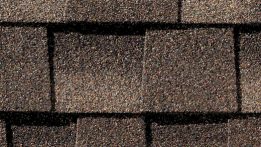 With the long-awaited arrival of spring, it’s high time to ready your wooden deck for the summer fun ahead. Tackling the project sooner, rather than later, is smart for a couple of reasons.
With the long-awaited arrival of spring, it’s high time to ready your wooden deck for the summer fun ahead. Tackling the project sooner, rather than later, is smart for a couple of reasons.
“Not only is it more comfortable to work in springtime temperatures, but deck stain forms the most durable, long-lasting finish in mild weather,” says Debbie Zimmer, paint and color expert at the Paint Quality Institute. “So, there’s little sense in delaying this project.”
Begin by assessing the condition of your deck to make sure it’s structurally sound. If you see any rotting or damaged boards, carefully replace them before doing anything else.
Next, remove any loose paint or stain by scraping and sanding the surface, or by treating it with a commercial deck conditioner, then power wash the entire deck with plain water. If you are changing the color of your deck, be sure to remove all of the old coating.
With the prep work finished, the fun begins as you plan the color and appearance of your deck. This is where you need to know a few basic facts about deck stain.
For starters, deck coatings are available in solvent-based and water-based (latex) formulations; however, the latter offer some big advantages. Water-based stains dry more quickly, are relatively odor-free, and offer simple cleanup with plain soap and water. Most importantly, these stains have better resistance to weathering. Both types of stain are available as clear finishes and in an array of attractive colors.
 If you are thinking about applying a clear finish to show off the natural appearance of the wood on your deck, be aware that these coatings offer very limited protection from the sun’s UV rays – so little, in fact, that you will probably have to reapply your clear coating every year.
If you are thinking about applying a clear finish to show off the natural appearance of the wood on your deck, be aware that these coatings offer very limited protection from the sun’s UV rays – so little, in fact, that you will probably have to reapply your clear coating every year.
For longer-lasting protection, consider applying a pigmented stain. They come in two types: “semi-transparent” stains, which help protect the wood without hiding its grain or texture; and more heavily pigmented “solid-color” stains, which show the texture, but not the grain. Semi-transparent stains typically need to be reapplied every 18 months or so, while solid-color stains can last three to five years.
Regardless of the type of stain you prefer, it’s extremely important that you choose a top quality coating. That’s because a deck stain is subject to enormous stress. Not only is it exposed to all types of weather – from strong sunlight to standing water, snow and ice – but it also must endure physical abuse from foot traffic, as well as abrasion from patio furniture, planters and playthings.
So, how can you spot a high quality deck stain? According to Zimmer, you should zero in on a water-based stain made with 100% acrylic.
“Top quality 100% acrylic latex water-based stains are extremely tough and durable. Many of these coatings even contain special ingredients that help prevent mildew from forming, so they are a great option for any deck,” she says.
You can apply your deck stain with spray equipment, a long-handled roller, or with a brush. However, if you use a roller or sprayer, you should “back brush” while the stain is still wet – going back in and brushing the stain – to help it penetrate the wood. When applying 100% acrylic latex stain, allow it to dry several hours and apply a second coat to get the best protection for your deck. Of course, always follow the directions on the can label.
Whatever type of stain you use, don’t delay. We’re in peak season for deck staining! ![]()




